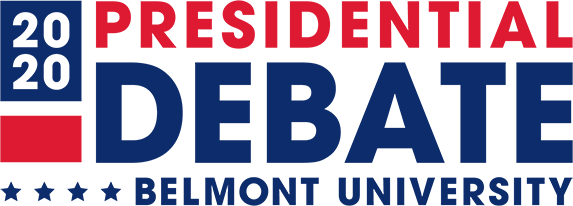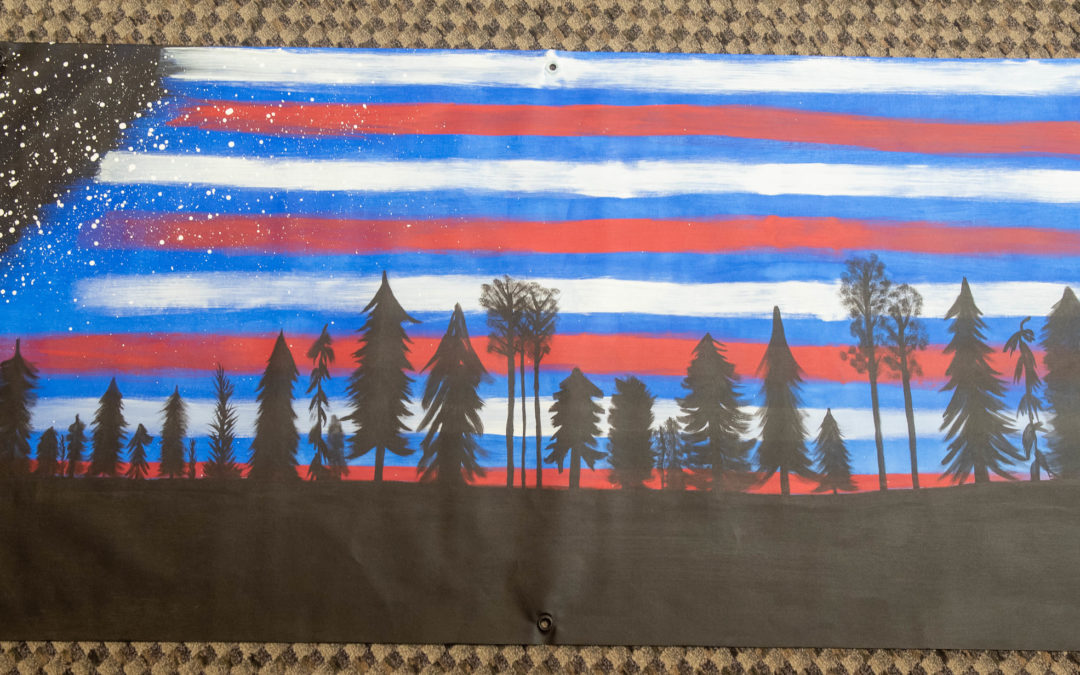Inspired by Oct. 22 Presidential Debate at Nashville’s Belmont University, works from artists around the country displayed in online gallery.
In anticipation of the Oct. 22 Presidential Debate on Belmont University’s campus, visual artists from across the United States were invited this summer to use the American flag and their home states as inspiration to create Unity Flags that promote empathy for bipartisanship. The brainchild of Belmont’s Watkins College of ArtAssistant Professor/Program Director of Fine Arts Dr. Meaghan Brady Nelson, the now completed “Unity Flag Project” is on display in the campus’ Leu Center for the Visual Arts. Since the University’s COVID-19 protocols currently restrict in person access to the gallery to Belmont students, faculty and staff, a free website—unityflagproject.com—was built to allow art lovers anywhere to enjoy the exhibit for free.
The artists, who represent more than 30 states, were asked to create a 3 foot by 5 foot flag that demonstrates “purple empathy,” a concept indicative of the optical blending of Blue and Red coming together to engage in bipartisan civil discourse. A virtual gallery presentation featuring Nelson and other contributing artists discussing the project and selected works will be held Thursday, Oct. 8 at 5 p.m. CT—visit the Events page on belmontdebate2020.com to join the online conversation.

From Sea to Shining Sea, Unity Flag submitted by Holly Grosshans (Illinois)
“Belmont University is recognized nationally as an exceptionally talented and creative community,” said Belmont President Dr. Bob Fisher. “As the catalyst and organizer of this exhibit, Dr. Brady Nelson exemplifies that notion while also using her skills to inspire civil discourse among her students and everyone fortunate enough to experience these works of art. This reflects a uniquely Belmont way to explore citizenship as we prepare for hosting the third and final presidential debate of 2020.”
Dr. Brady Nelson added, “As the director of The Unity Flag Project, I had the extreme honor of unrolling each Unity Flag and viewing them first as they arrived on Belmont University’s campus. As I critically read the visual of each one, I became overwhelmed with a feeling of connection and community deeper than I have ever experienced through collaborative artmaking. It is obvious that every Unity Flag creator dedicated many hours to their design and process of making. For this I am deeply humbled and inspired as an Artist and an American. Each Unity Flag is distinctive in its visual meaning, and as a collective they help us to understand, become aware of, and sensitive to, vicariously experiencing bipartisan discourse.”
Some examples of the artwork presented in the Unity Flag Project include:
- Dr. Craig Wansink, Christine Hall and Kelly Jackson of the Robert Nusbaum Center at Virginia Wesleyan University collaborated on a flag that uses a lighthouse and heart images in representing their state, noting them as symbols of welcome and hope. “The United States has been a beacon of hope for so many around the world. May we remain vigilant in uniting around a vision for a more perfect union, a union in which equality and justice for all ring true.”
- Tanya Wall and Jordan Sauer were inspired by the Wyoming State Code of Ethics in creating their flag, encouraging viewers to do their part to make the world a better place. “We believe that kindness, courage and optimism are traits we should all have in this current time and climate in order to make a positive impact on humanity.”
- From Alaska, Vonnie Gaither uses a flag seemingly covered in confetti to express her idea: “Confetti is defined as small bits of paper, usually colored, thrown or dropped to enhance the gaiety of an event. I think of confetti as a form of celebration such as a party, a wedding, and joyful holidays when people get together as one. My flag of splattered colors represents a celebration of America, the unification of all into one.”


Recent Comments